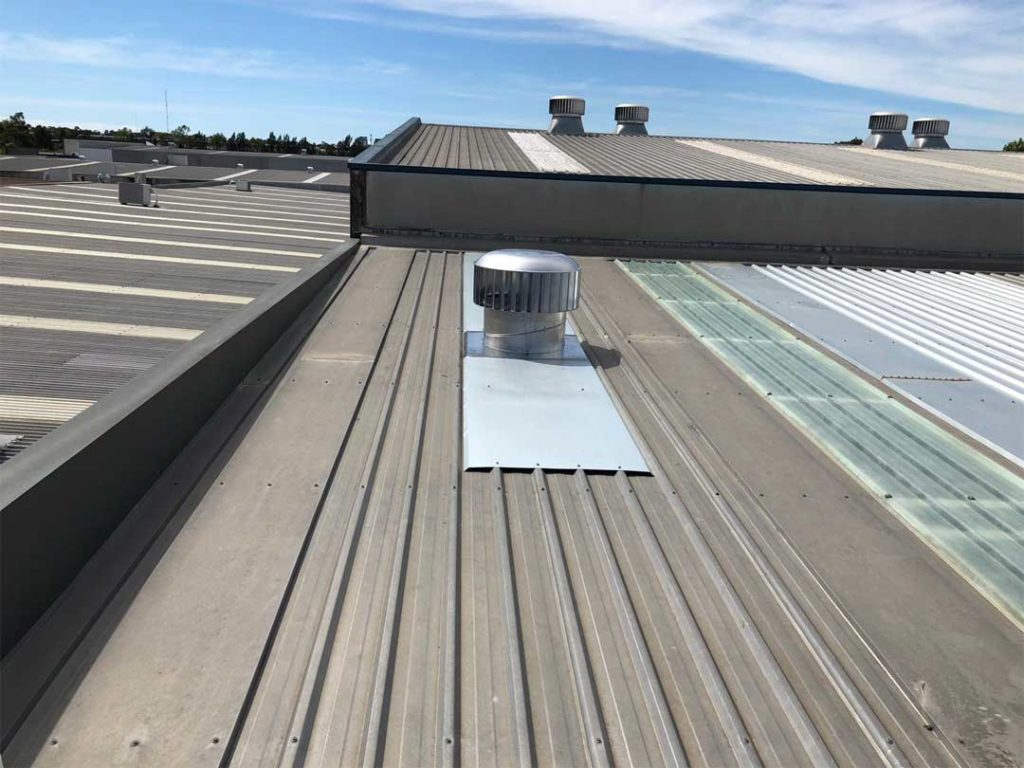Industrial Roof Ventilation Fans: Enhancing Air Quality and Cooling Solutions
Introduction
Industrial facilities are bustling hubs of productivity, housing machinery, equipment, and often a considerable number of employees. Ensuring a comfortable and safe working environment in these spaces is crucial for both worker well-being and operational efficiency. One essential aspect of maintaining a suitable indoor environment is industrial roof ventilation. In this article, we will explore the importance of industrial roof ventilation fans, their role in improving air quality and cooling, and various solutions available, including industrial turbine roof vents.
- The Importance of Industrial Roof Ventilation
Industrial facilities generate heat, fumes, and pollutants that can compromise indoor air quality. Proper ventilation is essential to remove these contaminants and maintain a healthy workplace environment. Industrial roof ventilation plays a pivotal role in achieving this by expelling stale air and introducing fresh outdoor air.
A. Enhancing Air Quality
Industrial processes often release harmful gases and particulates into the atmosphere. Without adequate ventilation, these pollutants can accumulate indoors, leading to various health issues among workers, including respiratory problems and discomfort. Industrial roof ventilation fans act as an effective means to evacuate contaminated air, reducing the risk of airborne diseases and improving overall air quality.
B. Cooling Solutions
Heat generated by machinery and manufacturing processes can make industrial environments sweltering, especially during the summer months. Industrial roof ventilation provides an efficient cooling solution by expelling hot air and allowing cooler outdoor air to enter the workspace. This not only enhances the comfort of workers but also prevents equipment overheating, which can lead to costly downtime.
- Industrial Roof Ventilation Solutions
Now that we understand the importance of industrial roof ventilation, let’s delve into the various solutions available to address air quality and cooling concerns in industrial settings.
A. Industrial Roof Ventilation Fans
Industrial roof ventilation fans are mechanical devices designed to remove hot, stale air from the interior of a building and replace it with fresh outdoor air. These fans come in various sizes and configurations to cater to the specific needs of different industries.
- Centrifugal Fans: These fans are highly efficient and capable of moving large volumes of air. They are suitable for industries with high heat and pollutant generation.
- Axial Fans: Axial fans are ideal for facilities that require a continuous flow of air. They are energy-efficient and work well for cooling purposes.
- Mixed Flow Fans: These fans combine the characteristics of both centrifugal and axial fans, making them versatile and suitable for a wide range of applications.
Industrial roof ventilation fans can be installed on the roof or walls of a facility, depending on the layout and requirements. They are typically equipped with advanced control systems to adjust the ventilation rate according to the indoor conditions.
B. Industrial Turbine Roof Vents
Industrial turbine roof vents, also known as whirlybird vents, offer a natural and energy-efficient way to enhance industrial roof ventilation. These vents harness wind power to create airflow within the building. As wind blows over the turbine, it creates a pressure difference that draws air out of the building, effectively cooling the interior.
- Energy Efficiency: Industrial turbine roof vents do not require electricity to operate, making them a cost-effective and eco-friendly ventilation solution. They are particularly useful in areas with reliable wind patterns.
- Low Maintenance: Turbine roof vents have minimal moving parts and are designed for durability. They require little to no maintenance, reducing long-term operational costs.
- Continuous Ventilation: Unlike electric fans that may shut down during power outages, turbine roof vents provide continuous ventilation as long as there is wind, ensuring uninterrupted air quality and cooling.
- Choosing the Right Industrial Roof Ventilation Solution
Selecting the appropriate industrial roof ventilation solution depends on several factors, including the size of the facility, the nature of industrial processes, and environmental conditions.
A. Facility Size: Larger industrial spaces may require multiple industrial roof ventilation fans to effectively remove hot air and pollutants. Smaller facilities may benefit from a combination of roof vents and wall-mounted fans.
B. Process Specifics: The type of industrial processes conducted within the facility determines the level of heat and pollutant generation. Facilities with high heat and pollutant outputs may require more robust ventilation systems.
C. Environmental Considerations: Regions with consistent wind patterns are suitable for turbine roof vents, while areas with irregular winds may benefit from electric fans with backup power sources.
D. Regulatory Compliance: Depending on your industry, there may be specific regulations governing air quality and ventilation. Ensure that the chosen ventilation solution meets these requirements.
Conclusion
Industrial roof ventilation fans and turbine roof vents are indispensable for maintaining a healthy and comfortable working environment in industrial facilities. They play a vital role in improving air quality, cooling the workspace, and ensuring the well-being of employees. By choosing the right ventilation solution based on facility size, process specifics, environmental considerations, and regulatory compliance, industrial operations can thrive while prioritizing the health and safety of their workforce. In the pursuit of productivity and sustainability, investing in industrial roof ventilation is a step in the right direction.

